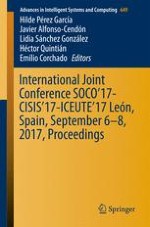This volume includes papers presented at SOCO 2017, CISIS 2017, and ICEUTE 2017, all conferences held in the beautiful and historic city of León (Spain) in September 2017.
Soft computing represents a collection of computational techniques in machine learning, computer science, and some engineering disciplines, which investigate, simulate, and analyze highly complex issues and phenomena.
These proceeding
s feature 48 papers from the 12th SOCO 2017, covering topics such as artificial intelligence and machine learning applied to health sciences; and soft computing methods in manufacturing and management systems.
The book also presents 18 papers from the 10th CISIS 2017, which provided a platform for researchers from the fields of computational intelligence, information security, and data mining to meet and discuss the need for intelligent, flexible behavior by large, complex systems, especially in mission-critical domains. It addresses various topics, like identification, simulation and prevention of security and privacy threats in modern communication
networks
Furthermore, the book includes 8 papers from the 8th ICEUTE 2017. The selection of papers for all three conferences was extremely rigorous in order to maintain the high quality and we would like to thank the members of the Program Committees for their hard work in the reviewing process.
